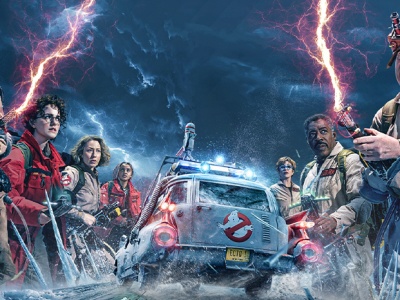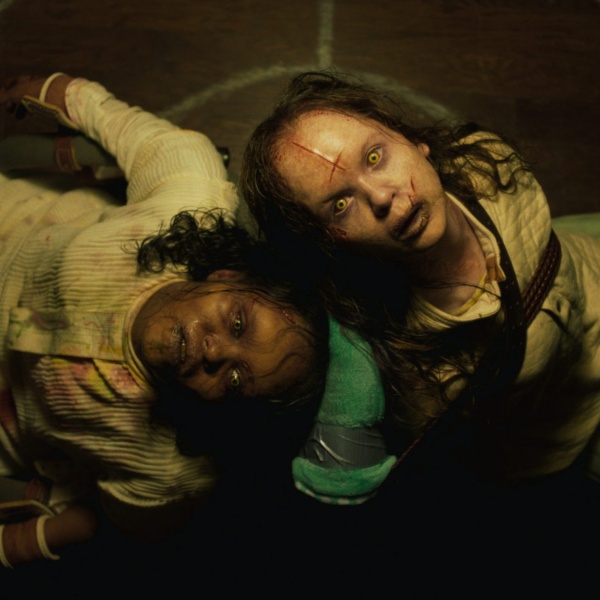Film- Charles Darwin’s medium of choice
Let’s talk adaptations, not the Darwinian kind, film adaptations. Where to start? How about those great-big-bloody-billion-dollar-box-office-busting-comic-book-movies? In Tinseltown comic book inspired films practically have a AAA credit rating and are so ubiquitous that they’re banked up like peak-hour traffic in Sydney; Marvel Studios alone has a timeline of releases stretching to 2019 with over ten films on its ‘to do list’, that’s not even mentioning Warner Bros. and their DC Comics line-up, or Marvel’s Sony owned properties.
If you look back at the history of filmmaking you’ll find that comic books are simply the latest in a long line of suitors trying to string Hollywood’s bow; film has proven itself as a medium that is remarkably malleable, able to accommodate works of fiction and fact born from other art-forms into celluloid form with uncanny results, turning original content into sometimes fantastic, often passable, occasionally atrocious works of cinema.
Film is a potent medium in that it penetrates contemporary culture more deeply, more broadly than any other popular art form: novels are deemed too difficult and time consuming, theatre, ironically enough, is now often seen as only for the rich and the elite, and the very comic books that studios are making billions off are now subsidised by the films that they inspire, television is too broad and music too subjective.
So why film? It’s because film is easy, modern audiences understand the language and can quickly parse the code of a given film, watch it from start to finish in 90 to 120 minutes, and have a fully formed opinion with which to engage friends and colleagues. And speaking of friends, film-going is also a great social outing, unlike sitting by yourself attempting to read Ulysses while holding down a full-time job and trying to occasionally leave your flat to socialise.
I ask myself what got me thinking about film in this way and the simple answer is that I watched two films this week that were adapted from a manga strip and a novel that could not be more different in spite of their seeming similarities. If nothing else, it has given me a lens through which to compare and contrast what I have been watching in what I hope will be an ongoing column-style-format with which to engage readers and start a discussion about what we are all watching.
The films in question are Doug Liman’s Edge of Tomorrow and Brian Glazer’s Under the Skin, both films are about alien invasions, both films are adaptations, both films pack recognisable Hollywood star power, and both films were released in the past year.
In spite of the family resemblance, examining the similarities of these two films with any kind of depth shows that far from being peas in a pod, like the aliens they feature, these two films are from entirely different planets. Let’s take the second point first; both of these films are adaptations.
Edge of Tomorrow is based on Hiroshi Sakurazaka’s All You Need Is Kill a manga illustrated by Takeshi Obata, the set of two books details an alien invasion with a quantum physics twist. Keiji Kiraya is the hero of the story, a young soldier with little in the way of combat skills. When we meet Keiji he is lying on his bunk waiting to be sent to the frontlines of the war against the aliens known as Mimics. Little is known about the Mimics aside from the fact that they are lethal on the battlefield and hard to kill with conventional weaponry. When Keiji reaches the bombed out beach of the battle he is promptly eviscerated by one of the creatures only to find himself again on his bunk, just as he was the morning before the battle. Thus begins Keiji’s déjà vu/Groundhog Day experience whereby he is killed every day ad infinitum, every time reawakening on his bunk.
Keiji slowly begins to realise that he is caught in a loop, and it is only after meeting Rita, another victim of the paradoxical time-loop from a previous battle, that he learns the only way to live till tomorrow is to kill the Mimics in a set order. The manga is an insane action spectacle; the characters wield giant battle axes and high-powered machine-guns against their extra-terrestrial foes and for every wicked dispatch of a Mimic there is a gruesome death scene for Keiji or Rita. When I finished the two books (a feat of brusqueness for the notoriously long-running soap opera style medium of manga strips) I realised that this was the inspiration upon which Edge of Tomorrow is based.
The film adaptation is doggedly faithful to its source with the obvious Americanisation of Keiji’s character into Tom Cruise’s Cage and some differentiation on the details of exactly how all the paradoxical physics work. The changes are smart and act to streamline the film’s narrative structure, taking nothing away from the original text.
What is great about modern computer generated technology is the way in which films based on comics and manga are able to render scenes of pure imagination on screen for cinema goers with true fidelity to the original material. The only difference is artists can create black and white images of mechanised armour and swift movingaliens like the above with a pencil and paper, ofr CGI in films it is a much more costly endeavour.
Under the Skin is based on a novel by Michael Faber which I have admittedly not read, but according to an interview Glazer did with The Guardian, the film is vastly different from the book. In the interview Glazer said he liked Faber’s carnivorous aliens but he “knew that I absolutely didn’t want to film the book. But I still wanted to make the book a film.”
 The film follows Scarlett Johanssen’s ‘The Female’ as she cruises around Glasgow picking up single men from her Ford Transit with a soft English accent, a fake brown wig and the promise of sex. Upon entering her abode the men are quickly incapacitated in a pool of pure blackness where they are suspended to be consumed by an unknown entity, presumably for their caloric value. All that remains of the corpses when they have been processed is their freshly separated skin.
The film follows Scarlett Johanssen’s ‘The Female’ as she cruises around Glasgow picking up single men from her Ford Transit with a soft English accent, a fake brown wig and the promise of sex. Upon entering her abode the men are quickly incapacitated in a pool of pure blackness where they are suspended to be consumed by an unknown entity, presumably for their caloric value. All that remains of the corpses when they have been processed is their freshly separated skin.
Under the Skin haunts me. It is a film that many will outright despise, many of whom will no doubt enjoy Edge of Tomorrow, the reason I say this is because Under the Skin is a difficult film, it eschews what many see as traditional filmmaking in favour of creating what is the alien-headed offspring of Stanley Kubrick and David Lynch with a touch of Chris Cunningham for taste.
In the same way literature is now seen as being too difficult for many, put aside for a page-turner or even more pervasively, television, so too will Under the Skin fly under the radar of populism just as Edge of Tomorrow will embrace it. Edge of Tomorrow is mindless fun and a good film for just that, but it will never be talked about in the same hushed tones of awe as Under the Skin.
Apples and oranges, one is an action sci-fi blockbuster, the other is a sci-fi masterpiece of subtlety and slow-pacing. Both films boast recognisable actors, but where Cruise and Blunt are used as marquees to prop the money making blockbuster machine, Johansson is used as a very clever meta device; after all, what could be more alien than a huge Hollywood star like Johansson wandering the streets of Glasgow picking up random men off the street? Remarkably Johansson gives the best performance of her career, a feat in itself after her phone-in jobs on the aforementioned Marvel movies.
The way the films extraterrestrial life interact with humanity in the two films also says a lot about the style of the films themselves. Edge of Tomorrow‘s Mimics wage bloody war on the populace, announcing there presence like the fanfare associated with the release of a big Hollywood blockbuster: Under the Skin‘s aliens work in secret, picking off those that no-one will miss and consuming them in the shadows, it’s a film of secrets, one that those ‘in the know’ can discuss and dissect in coffee houses and dimly lit bars.

Jonathan Glazer
Edge of Tomorrow is nothing if not a lot of fun; it’s not a deep film but the amusement of watching Cruise’s Cage Live. Die. And Repeat. is strangely engaging. Cage is impaled, burned, squashed, and shot over and over again as he and Blunt’s Rita work toward figuring out how to stop the Mimics. A lot of what makes the film so much fun is the superb special effects that give the film a sense of veracity. Ultimately though, Edge of Tomorrow will make a lot of money and be quickly forgotten, just another blockbuster in a long line of comic book adaptations.
Under the Skin on the other hand is the type of film that will cement Jonathan Glazer as a visionary in the lineage of Kubrick and Lynch. It is a film that I expect more and more people will see, and it is a film that will be talked about for years to come.
Both of these films are adaptations, but the difference lies in the approach taken by the filmmakers; one film is doggedly faithful to its source material, the other takes high concept ideas and reworks them into a film that is unique in its film-ness. And this is the crux of the matter; the very best film adaptations are the ones that take what the source material offers and embed these elements into something that couldn’t be anything other than a film. Just like the best novels are immutably novels and the best comic books irrevocably comic books, so too are the best films quintessentially films.
Many will argue that Edge of Tomorrow is the better film because of the polarising nature of Under the Skin, but the true test of any film is whether anyone will be bold enough to call a film a masterpiece. For Under the Skin there is a few who have already proclaimed just that.













